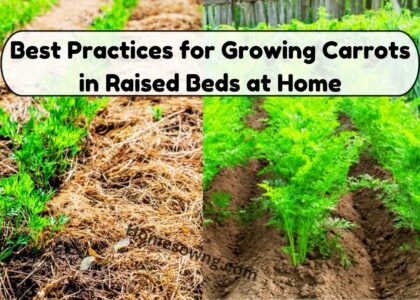Radishes, with their vibrant colors and peppery taste, are a fast-growing and rewarding addition to any home garden. Whether you’re an experienced gardener or a novice with a green thumb, cultivating radishes is a straightforward and enjoyable process. In this guide, we will explore the best methods for growing radishes in your home garden, ensuring a quick and satisfying harvest.
Choosing the Right Radish Variety
The world of radishes offers a variety of shapes, colors, and flavors. Select a radish variety that suits your preferences and growing conditions. Common varieties include Cherry Belle, French Breakfast, and Easter Egg radishes, each with its unique characteristics.
Timing and Season
Radishes are known for their rapid growth, making them an excellent choice for gardeners seeking quick results. Plant radish seeds directly in the garden as soon as the soil can be worked in early spring. Additionally, radishes can be grown in the fall for a late-season harvest.
Soil Preparation
Radishes prefer well-draining soil with a neutral pH. Prepare the soil by amending it with organic matter, such as compost, to enhance fertility. Loose, well-aerated soil is crucial for the development of radish roots.
Planting
Plant radish seeds directly in the garden, sowing them about half an inch deep and one inch apart. Rows should be spaced 12-18 inches apart, depending on the variety. Thin the seedlings as they emerge, leaving space for proper root development.

Sunlight and Watering
Radishes thrive in full sunlight. Ensure your garden receives at least 6 hours of direct sunlight daily. Keep the soil consistently moist but not waterlogged. Inconsistent watering can lead to pithy or overly spicy radishes.
Fertilization
Radishes are not heavy feeders, but incorporating a balanced fertilizer during soil preparation can provide the nutrients necessary for optimal growth. Avoid excessive nitrogen, as it may result in lush foliage at the expense of root development.
Thinning
As the radish seedlings grow, thin them to allow sufficient space between plants. Thinning prevents overcrowding and promotes the development of well-formed radish roots.
Pest Control
Radishes are generally resistant to pests, but it’s essential to monitor for common garden insects. Insecticidal soap or companion planting with repellent herbs can help keep pests at bay.
Harvesting
Radishes are typically ready for harvest in 20-30 days. Harvest when the roots reach the desired size, usually between 1 to 2 inches in diameter. Pull them from the ground gently, and be sure to enjoy their crisp texture and peppery flavor at their peak freshness.











